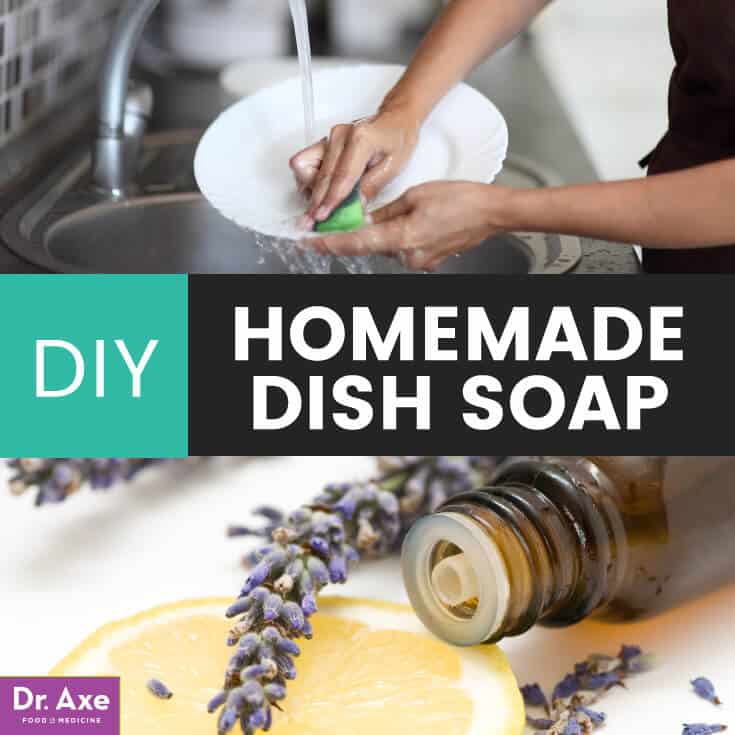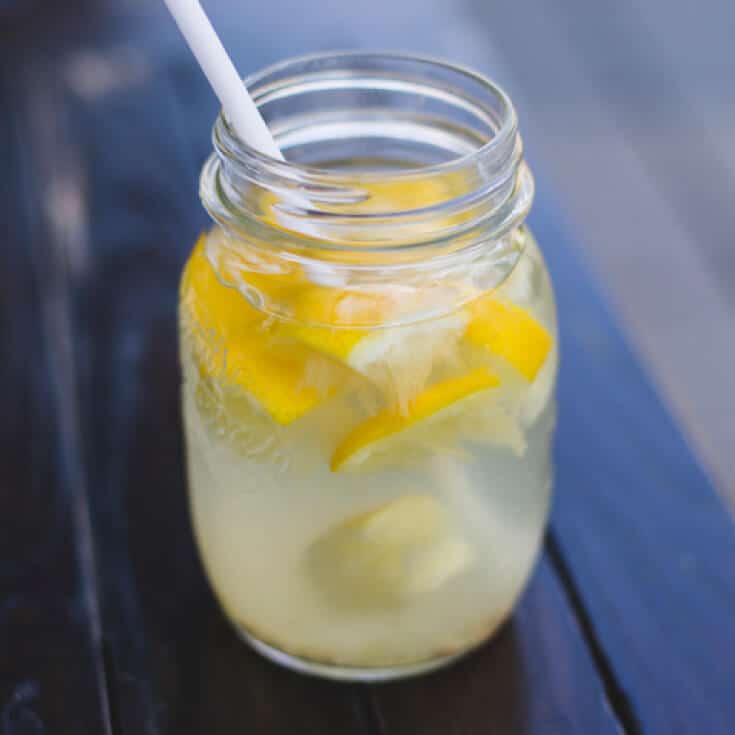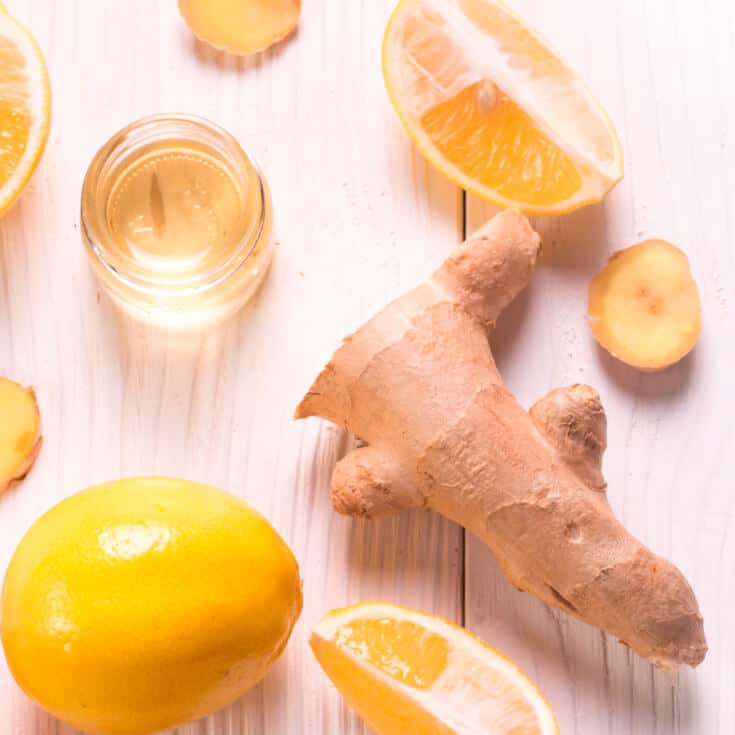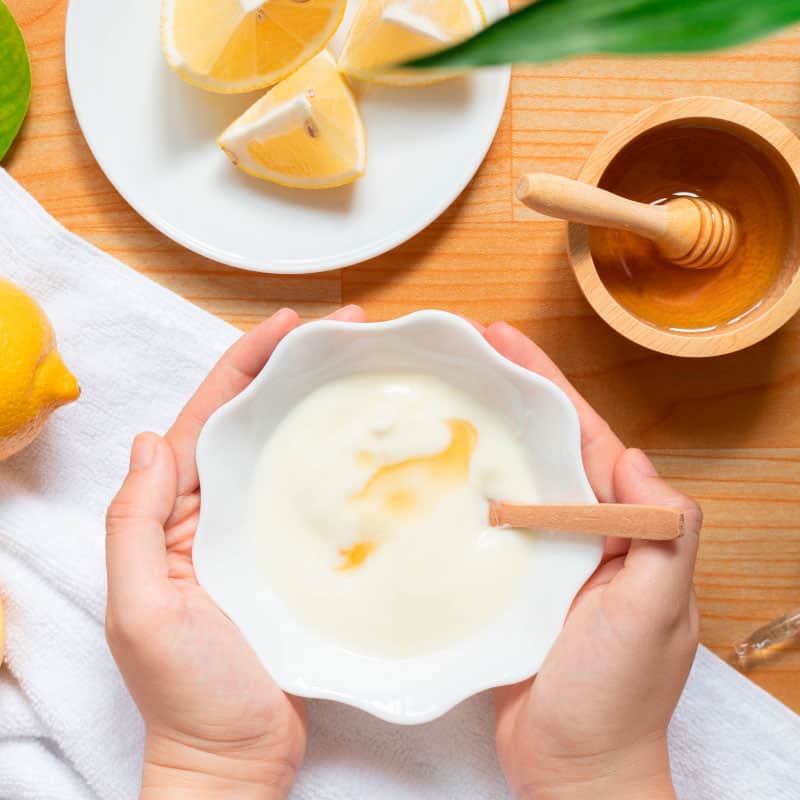This Dr. Axe content is medically reviewed or fact checked to ensure factually accurate information.
With strict editorial sourcing guidelines, we only link to academic research institutions, reputable media sites and, when research is available, medically peer-reviewed studies. Note that the numbers in parentheses (1, 2, etc.) are clickable links to these studies.
The information in our articles is NOT intended to replace a one-on-one relationship with a qualified health care professional and is not intended as medical advice.
This article is based on scientific evidence, written by experts and fact checked by our trained editorial staff. Note that the numbers in parentheses (1, 2, etc.) are clickable links to medically peer-reviewed studies.
Our team includes licensed nutritionists and dietitians, certified health education specialists, as well as certified strength and conditioning specialists, personal trainers and corrective exercise specialists. Our team aims to be not only thorough with its research, but also objective and unbiased.
The information in our articles is NOT intended to replace a one-on-one relationship with a qualified health care professional and is not intended as medical advice.
Homemade Dish Soap with Lemon and Lavender Oil
February 8, 2017

I know it is so easy to just grab that bottle of dishwashing soap off the shelf at the grocery store like you’ve always done, but have you given thought to what might be in that bottle of soap?
Yes, there are some great options among eco-cleaners that offer clean ingredients, but they can get pricey. What’s great is that making your own might be even easier than buying it off the shelf, and definitely a lot safer for you and your family!
Conventional Dish Soap: A Lot More Dangerous Than You’d Think
Before I show you my homemade dish soap recipe, let’s find out what’s in that average plastic bottle of dish soap. It may shock you.
In reviewing a few conventional hand dishwashing detergents, the Environmental Working Group (EWG) noted some concern about many ingredients causing cancer, DNA damage, eyesight issues, digestive problems as well as potentially injuring organs and the nervous system. Also, there is some moderate concern about respiratory effects and that some ingredients could cause allergies and skin irritations as well. (1)
There is even a high concern of toxicity to aquatic life since what goes down your drain can make its way to the environment. The EWG gives many conventional dishwashing soaps the low grade of “D,” which means there is HIGH CONCERN and likely hazards to health or the environment. They may also have poor ingredient disclosure that can cause a low rating for obvious reasons. One was rated as “F,” which is noted as HIGHEST CONCERN containing potentially significant hazards to health or the environment or poor ingredient disclosure.
According to EWG, some specific ingredients of concern that are commonly found on conventional dishwashing soaps are:
Methylisothiazolinone
High Concern: acute aquatic toxicity
Some Concern: skin irritation/allergies/damage (The American Contact Dermatitis Society dubbed methylisothiazolinone the “Allergen of the Year” in 2013.)
Fragrance
Some Concern: skin irritation/allergies/damage, acute aquatic toxicity, nervous system effects, respiratory effects, biodegradation
Disclosure Concern: non-specific ingredient
FD&C Yellow 5
Some Concern: cancer, acute aquatic toxicity, chronic aquatic toxicity, general systemic/organ effects
Chloroxylenol
Some Concern: Needs more research
Sodium Lauryl Sulfate
Some Concern: chronic aquatic toxicity, general systemic/organ effects, acute aquatic toxicity
Sodium Laureth Sulfate
Some Concern: chronic aquatic toxicity, damage to DNA, respiratory effects, developmental/endocrine/reproductive effects, digestive system effects, nervous system effects, acute aquatic toxicity, damage to vision, cancer
Chloroxylenol, PPG-26, PEG-8 Propylheptyl, Alcohol Sulfates, Sodium Salt
Some Concern: Needs more research
FD&C Blue 1
Some Concern: skin irritation/allergies/damage
Alcohol Ethoxylates (C10-C16) Sodium Salt
Some Concern: chronic aquatic toxicity, damage to DNA, respiratory effects, developmental/endocrine/reproductive effects, digestive system effects, nervous system effects, acute aquatic toxicity, damage to vision, cancer
How to Make Homemade Dish Soap
Now that you understand why homemade dish soap is the way to go, let’s dig into this easy DIY recipe.
First, place the washing soda and grated soap into a bowl. Washing soda is similar to baking soda, and you could use either; however, washing soda has a bit more of a boost when it comes to cleaning. According to Arm & Hammer ™, it is a natural detergent and freshener and can be used for cleaning most anything around the home. It helps cut through grease easily, is completely natural and 100 percent fragrance and phosphate-free. (2)
The grated soap is a key ingredient in homemade dish soapbecause it helps add texture and volume to the blend. You can add a little more if you want it thicker and less for a thinner solution. The key here; however, is to use pure soap, such as grated Castile soap.
Next, heat water to boiling, then pour it over the washing soda and grated soap. Using a whisk, blend well. Once you mix those ingredients, add the Castile soap and blend again. As I mentioned above, Castile soap is 100 percent pure, which is why I love it. Castile is a type of soap made with vegetable oils, making it a vegan and cruelty-free ingredient. This makes it safe to use for most anyone.
Lastly, but one of my favorite parts, add the essential oils and mix again. Lemon essential oil not only provides a nice citrus scent, but it’s great at helping cut grease. It’s even considered one of the top most antimicrobial essential oils on the planet making it a natural disinfectant.
Lavender oil can’t be beat for it’s wonderful scent and is one of my all-time favorite essential oils. Besides the natural antioxidant protection that lavender provides, which can seep into the pores of the skin when using it with your DIY dishwashing liquid, it has phenomenal benefits when inhaling it (which is what happens while you are washing your dishes). Lavender is known for improving your mood and providing relaxation — now that is what I call therapeutic cleansing! (3) Allow it to cool, stirring occasionally.
Once all ingredients have cooled, pour your homemade dish soap into a BPA-free squirt bottle or a glass bottle with a pump and you are ready to go! Wash your dishes as you normally would and rinse well.
Precautions
Like any product, if you notice any irritation, stop using immediately. Though these ingredients are gentle, it may cause an allergic reaction. You can also use different essential oils that you may prefer or have a better experience with using. Seek a holistic or functional medicine doctor for advice if needed. Avoid the eye area.
Homemade Dish Soap with Lemon and Lavender Oil
Ingredients:
- 1 cup Castile soap
- ¼ cup soap flakes or grated Castile soap
- 4 tablespoons super washing soda
- 4 ounces purified water
- 30 drops lemon essential oil
- 30 drops lavender essential oil (optional, rosemary)
Directions:
- Place the soap flakes and washing soda into a bowl and blend with a whisk.
- Bring the water to a boil, then pour on top of the ingredients. Stir.
- Add the remaining ingredients.
- Blend all ingredients well.
- Allow to cool, stirring occasionally, then pour into a BPS-free squirt bottle or a glass bottle with a pump.
Comments
Please keep comments under 200 characters.











Hi, I’m Ertuğrul. I used the same recipe, but I saw that Dr.As Axe said, “mix and let cool”, I did the same, a white dark foam formed about 2 cm at the top of my mixture, and when it cooled down, I filled it into a bottle. Oh my God, I could barely get the freezing soap out of the bottle when I almost thought my money was garbage. I added another 2 ounces of distilled boiling water to the container again and mixed it until it cooled down, and then I did what I could think of. I said if I don’t take the foam part on top, it will all be foam, and when I took the foam with the help of a spoon, my dark yellowish and dense consistency soap appeared, I tried it and it feels great. I can guarantee that when everyone does it this way, he won’t throw away his money anymore. Just think a little freely,thank you.
I tried this recipe and it hardened after it cooled. I used grated Castile soap instead of soap flakes… what did I do wrong?
Can you substitute the soap flakes? I have only Castile soap sadly
The mixture creates a solid, goopey mixture . In addition, even using it as a blob, it leaves dishes with a film. Save your money and move on.
I used a recipe that literally called for 6 cups of water for that much super washing soda. Washing soda thickens the liquid dramatically so 4 oz. of water is absolutely not enough. Keep the liquid Castile at one cup but increase the grated Castile soap to one cup.
My soap didn’t stay sudsy long, any suggestions? Was it because my flakes weren’t melted?
I don’t want soap that leaves scum and I thought castile did that.
This recipe is similar and seems to work out better. https://naturesnurtureblog.com/homemade-dish-soap/
So I made this recipe and mine is basically a brick now. Is there a way to salvage it?
Mine did the samething… i ended up puttimg in a total of 24 oz of water, and so far it is perfect… add more water amd i blended mine with a hamdmixer
I used in my dishwasher the other day as I prefer a more liquid soap for hand washing; good news, it worked beautifully!
I am interested in making this soap and pouring it into the built-in liquid soap dispenser next to the kitchen sink faucet. Do you know if this will work well?
I look forward to hearing from you.
It’ll be way too thick in my opinion. Read above comments. A lot of folks have been having the same issue; so thick!
I guess I should have scrolled through first. Can almost use it as bar soap! Doubled the boiling water.. Getting better..
Scrolled through all of the comments to see if anyone else had the same problem. Good news, it wasn’t just me. Bad news, no answer to our issue. Other than adding more and more hot water, there must be something we can try to avoid the over-thick glop.
This leaves a film. Any suggestions?
I think the bigger question is why hasn’t Dr Axe replied to the issue everyone is bring up about it being to thick? It’s been six months with no reply. Makes me question other things he’s touting.
I completely agree!
I followed the recipe exactly and also have the same problem with it thickening up and not being usable.
I am somewhat new to essential oils, Dr. Axe (I attended one of his very informative seminars, and webinars), his website, and his products (that I am loving and finding very beneficial), but I’m concerned also as to why the Dr. Axe staff has not yet replied to these questions/issues.
Hopefully, it’s just an oversight. But nonetheless, I’m waiting patiently, somewhat. 😕
How do you prevent it from clumping?
Nice! Tried it myself. Here’s the lazy man’s recipe! https://www.youtube.com/edit?o=U&video_id=WcLS8k8ZOGw
After pouring the moisture into my bottles, it hardened. Any suggestions? I am making household cleaning baskets for friends and family and was disappointed. Ingredients are not inexpensive and I do not want to throw this out.
What is “super washing soda”?
This is great but very thick. Could I use it in the dishwasher as well?
In Homemade Dish Soap with Lemon and Lavender Oil, when you say a cup of castille soap, is that in addition to the flakes castille soap? I noticed Walmart has some castille liquid soap
https://www.walmart.com/c/kp/castile-soap
Now, I see all the other comments…yes, this is really thick. Dr Axe, have you made this yourself? How should we thin out the recipe? More water? more liquid Castille soap?
Thanks for the recipe. You might consider specifying that the 1 cup of Castille soap is liquid. Also, the amount of water used to “melt” the flakes isn’t enough water or hot long enough to melt the solids. I had to put it all back into a pot over low heat to melt it all.
I made this recipe exactly as stated and it is really really thick, and turned solid. Can you please confirm that the actual cup and tablespoon quantities are as stated. thank you
I find that reducing the washing soda amount thins it out. Once in a while I have to add a little bit of hot water and shake the mixture to thin it out.
I have ran into the problem that once this is all mixed up and cools it goes so thick that i have to scoop it out with a spoon and i even tried making the next batch with more water than what the recipe calls for and it still does the same thing…any suggestions why
what ias washing soda and where do I find it
I agree with the other comments. Its great seeing the ingredients listed but theres no actual recipe on how to make some of your solutions. Very frustrating!
Where are the exact amounts/recipes? They were always listed before and were very helpful as I’m new to making my own DIY’s. Please change it back. Thx
I’m with Leonora.
How much soda, how much soap n will the mixture
stau thin enough to spray.
THANK YOU…ILENE
Dr. Axe really good recipe, but here I didn’t understand “Next, heat water to boiling, then pour it over the washing soda and grated soap. Using a whisk, blend well. Once you mix those ingredients, add the Castile soap and blend again. As I mentioned above” how much we need of everything and if we added already grated castile soap and mixed them, why at the end we have to add again grated soap?
Thanks for answer
Leonora
You put the best washing soda and grated soap in bowl then pour hot water on it and whisk to dissolve then add liquid Castile soap.
Not sure why I typed BEST in there… aorry